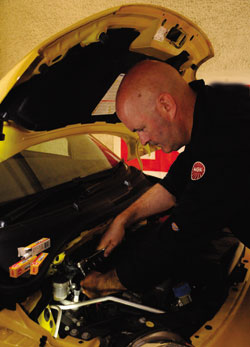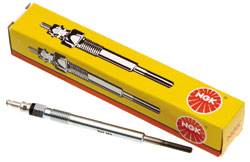
Diesel has obviously undergone a huge amount of change in the recent past. Although technology has moved on, the glow plug is essentially doing the same job that it always has done in raising the temperature inside the combustion chamber so that we can achieve stable combustion. However, the demands placed on the glow plug have become extremely severe and the performance that we expect is significantly higher than we ever had in the past. The technologies that have evolved have been a direct response to those demands.
We are reaching the point where we are trying to get the temperatures up in the combustion chamber so very, very quickly that there is no discernible delay between putting the key in the ignition and actually starting the engine with little or no smoke emission – even at extremely low ambient temperatures. You have therefore now got several technologies – from the standard metal glow plugs to the latest generation NHTC (New High Temperature Ceramic) types and the AQGS (Advanced Quick Glow System) plugs.
Ceramic glow plugs, though a little more expensive, are increasingly being selected by the OEs because of their long service life, extremely short pre-heating time and long post-heating time.
Stick to specification
Because the glow plug is now a vital part of the Engine Management System (EMS), as with most other components, it has never been more important to ensure that the correct specification item is fitted. Nowadays the EMS can pick up very quickly the fact that it is the wrong item, so that often rules out the ‘cheap’ alternative. The OBD system will find fault with the item if it is not to the correct specification and the performance of the vehicle will suffer.
Our advice is always to fit a plug that was manufactured to OE specification – as all NGK plugs are. Our ‘Fit & Forget’ philosophy means that we will only test specific parts against specific applications when we are absolutely 100% sure that they are entirely suitable for the vehicle. This philosophy is one of the reasons why NGK has been so successful – not only with spark plugs but with glow plugs as well.
Technical developments
Reduction in available space to install the plug in new engine designs will continue and plugs like the NHTC ceramic types – which are available with an unbelievably small thread diameter of M8 – will continue to assist engine designers in meeting forthcoming emissions legislation. Although not at the same level as the ceramic types, the small probe diameter AQGS plugs will become more widespread.
At moderate ambient temperatures some modern direct injection engines are less reliant on the glow plug to start up. However we need to reduce emissions still further. One particular way of achieving a reduction of NOx is by lowering compression ratios. However this makes the engine more difficult to start and therefore the cars are once again more reliant on the glow plug to start the engine.
Whatever challenges face engine designers you can rest assured that NGK will, as always, invest massively in research and development to provide them with a solution.









